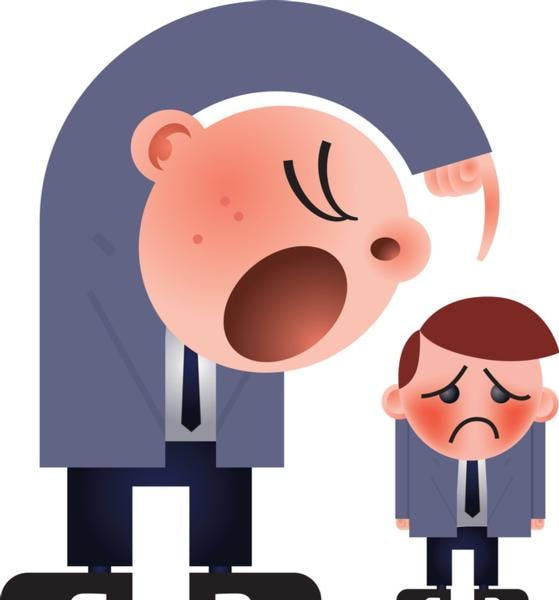Workplace bullying is on the rise, workers say.
A new CareerBuilder survey found that the number of workers encountering bullies at the office is increasing. Some 35 percent of workers said they have felt bullied at work, up from 27 percent last year.
Worse yet, 16 percent of these workers say they suffered health-related problems as a result of bullying, and another 17 percent said the bullying got so bad that they decided to quit their jobs to escape the situation.
The CareerBuilder survey, which was conducted online by Harris Interactive from May 14 to June 4, 2012 and included more than 3,800 workers nationwide, also found that nearly half of workers don’t confront their bullies, and the majority of bullying incidents on the job go unreported.
Who are the bullies?
Workers who felt bullied said the behavior came from the following people:
- Most (48 percent) pointed to incidents with their bosses;
- Another 45 percent said they were bullied by coworkers;
- Another 31 percent said they have been picked on by customers;
- And, 26 percent said they were bullied by someone higher up in the company other than their boss.
In addition, more than half (54 percent) said they were bullied by someone older than they were, while 29 percent said the bully was younger. Note: respondents could name more than one type of bully, so the totals add up to more than 100 percent.
Weapons of a workplace bully
The most common way workers reported being bullied was getting blamed for mistakes they didn’t make, followed by not being acknowledged, and, the use of double standards. The full list includes:
- Falsely accused of mistakes – 42 percent;
- Ignored – 39 percent;
- Used different standards/policies toward me than other workers – 36 percent;
- Constantly criticized – 33 percent;
- Someone didn’t perform certain duties, which negatively impacted my work – 31 percent;
- Yelled at by boss in front of co-workers – 28 percent;
- Belittling comments were made about my work during meetings – 24 percent;
- Gossiped about – 26 percent;
- Someone stole credit for my work – 19 percent;
- Purposely excluded from projects or meetings – 18 percent; and,
- Picked on for personal attributes – 15 percent.
Standing up to the bully
Parents teach children that they should always stand up to a bully because that frequently will make the bullying stop, but that’s not always the case in the workplace.
According to the CareerBuilder survey, about half (49 percent) of victims reported confronting the bully themselves, while 51 percent did not. Of those who confronted the workplace bully, half (50 percent) said the bullying stopped while 11 percent said it got worse, and 38 percent said the bullying didn’t change at all.
Sadly, HR didn’t fare particularly well in this survey.
CareerBuilder found that 27 percent of workers who felt bullied reported it to their Human Resources department. Of these workers, 43 percent reported that action was taken by HR while 57 percent said nothing was done – and that has to be an area of concern for HR professionals everywhere, especially given the increased focus on legal liability now in so many HR organizations.
What surprised me about this survey is that it shows that bullying in the workplace is getting worse, not better. And that comes despite all you hear about the so many organizations taking steps to cut down on bullying and all manner of bad behavior in the workplace.
My guess is that this study will drive a lot of other surveys that will dig deeper into the nature of the workplace bullying problem. That may take some time to happen, but in the meantime, managers, executives and HR pros can (and should) jump in to make sure their workplace is not one of the organization’s where this trend is going the wrong way.
